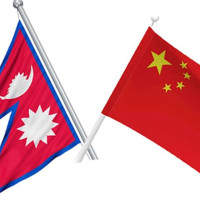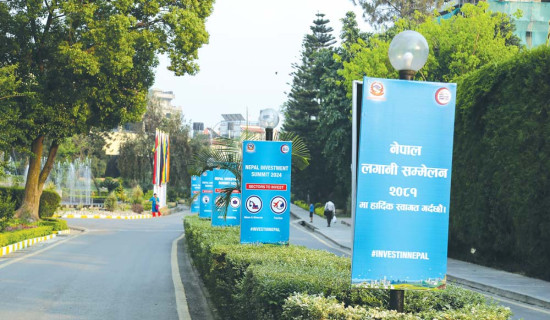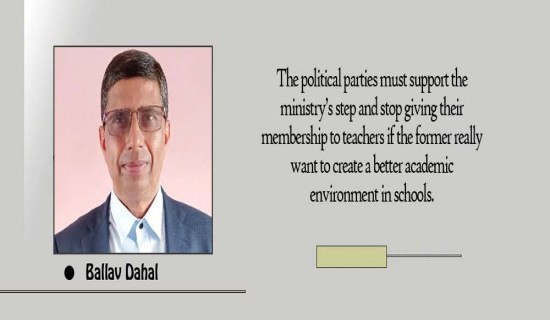- Tuesday, 30 April 2024
'Lonely' Indian Prime Ministers
Neerja Chowdhury, a familiar award-winning Indian journalist with crisp and candid analysis of people, events and issues that she has reported and analysed for more than four decades, has come up with the number one bestseller of the year. Her cogent and comprehensive approach on how Indian Prime Ministers taken as one of the most powerful positions in contemporary political history of countries, pursuing parliamentary system of governance, is vividly illustrated in the new book.
Chowdhury's most laudable and possibly the first of its kind work in the field is entitled How Prime Ministers Decide going into the very process of decision-making by leaders of what is the biggest democracy and also the world's most populous country. The voluminous book tends to succinctly portray the modus operandi of decision-making of six Indian chief executives taking into account six case studies that changed the course of Indian political, social and demographic history.
These critical decisions also greatly impacted the contours of Indian diplomacy as were the cases with Atal Bihari Vajpayee's go-ahead course for conducting nuclear tests and Dr. Manmohan Singh's solid endeavour to reach agreement on nuclear cooperation with the US. The characters analysed in the treatise include mother-son duo, Indira Gandhi and Rajiv Gandhi, P.V. Narasimha Rao, a polyglot who is credited to take his country on the road of modernization through espousals of liberal economy with incentives on investments, and Dr. Manmohan Singh.
Singh was incidentally a part of the team first chosen by Rao himself for economic liberalisation but was destined later to become the only really technocrat Prime Minister and that too for the third longest tenure so far. This record may be breached by Narendra Modi if he comes back to power in 2024. Incidentally, all four leaders belonged to the Indian National Congress (INC), a party established in 1885 and credited with the task of bringing about independence but has faced ups and downs in its political fate for the last five decades with its status highly plummeted especially since 2014. Two other Prime Ministers that the book has encompassed analysis, are equally interesting.
The first is Vishwanath Pratap Singh who started from the INC but chose to rebel against the grand old party and became Prime Minister with the support of various other outfits minus Congress. Though he is among two Thakurs to hold the positions, the other being Chandra Shekhar, he is the only former royal to become Prime Minister of India.
Though Singh did not hold the reins of leadership even for a year and is an exception in the sense that the writer chose other five leaders who completed their tenures, he brought the sensitive question of reservations for lower castes called Other Backward Castes in the forefront. In fact, Rajiv Gandhi enjoying unprecedented majority with 414 seats in the Lok Sabha, was to ultimately corrode his party in the worst manner through twin decisions of bringing about a legislation to undo what was called Shah Bano case, and open the locks of then disputed Ayodhya site alienating both Muslims and Hindus.
The second is what the writer calls the longest Prime Minister-in-waiting, Atal Bihari Vajpayee, possibly the most charismatic leader with across-the-board acceptance who became the first Premier with no connections with INC to head a government and that too complete the full tenure. The author has been very honest and candid in her presentations that she chose six characters deliberately taking into account the visible long-term impact their decisions made. She had the benefit of direct interactions with them and their close advisers and colleagues.
At the same time, she thought it prudent not to take up the case of first Prime Minister, the charismatic Jawaharlal Nehru who was in the saddle for more than seventeen years if his stewardship of the provisional government is also counted, on the grounds that she was too small during those days and did not have the opportunity to interact with.
Despite the prolific writer deliberately choosing six Prime Ministers and analysing their styles of decision-making and far-reaching repercussions for the country, a peep into quite long introduction and revealing epilogue of the book shows her profound sense of analysis and portrayal of all Indian Prime Ministers including Gulzari Lal Nanda, two times interim premier, with copious references of their successes and failures.
This includes Narendra Modi who is possibly one of the most popular leaders with his virtually full sway especially in the north, east and west of the country and doing his best to expand the reach and influence to what can be called south of the Vidhyas. Modi spent much time during recent electioneering in the south and consciously started from the region before he took part in Ayodhya programme of January 22, 2024 trying to connect the north and the south.
While mentioning Modi here and there in course of comparisons or portraying him among the most powerful Prime Ministers, Chowdhury has, however, thought it pertinent to omit him from direct analysis even withdrawing the chapter on Bharatiya Janata Party strongman. She feels that Modi is still ruling the country as his party that he helped establish a solid base across the country through social engineering, seeks to go for third consecutive mandate this year. Chowdhury feels she also does not have the benefit of hindsight as nobody speaks freely about any leader who is still in power and that too being quoted by name.
One major takeaway from the book is that all Prime Ministers faced loneliness despite being surrounded by supporters, cohorts, acolytes and courtiers who normally preferred to stick to the charmed circle but chose to conveniently run away or at least remain distant as what can be called fair-weather friends whenever some crises gripped their political masters. This trend made the position of the chief executive pathetically still lonelier and even more vulnerable.
In a country that has already celebrated platinum jubilee of its independence, one interesting aspect that is demonstrated by the book is how much senior journalists have qualitative access to their leaders and close circles. I congratulate the author for her magnum opus that is likely to generate a greater interest in the study of operating styles of Indian Prime Ministers.
(Dr. Bhattarai is a former foreign secretary.)
















